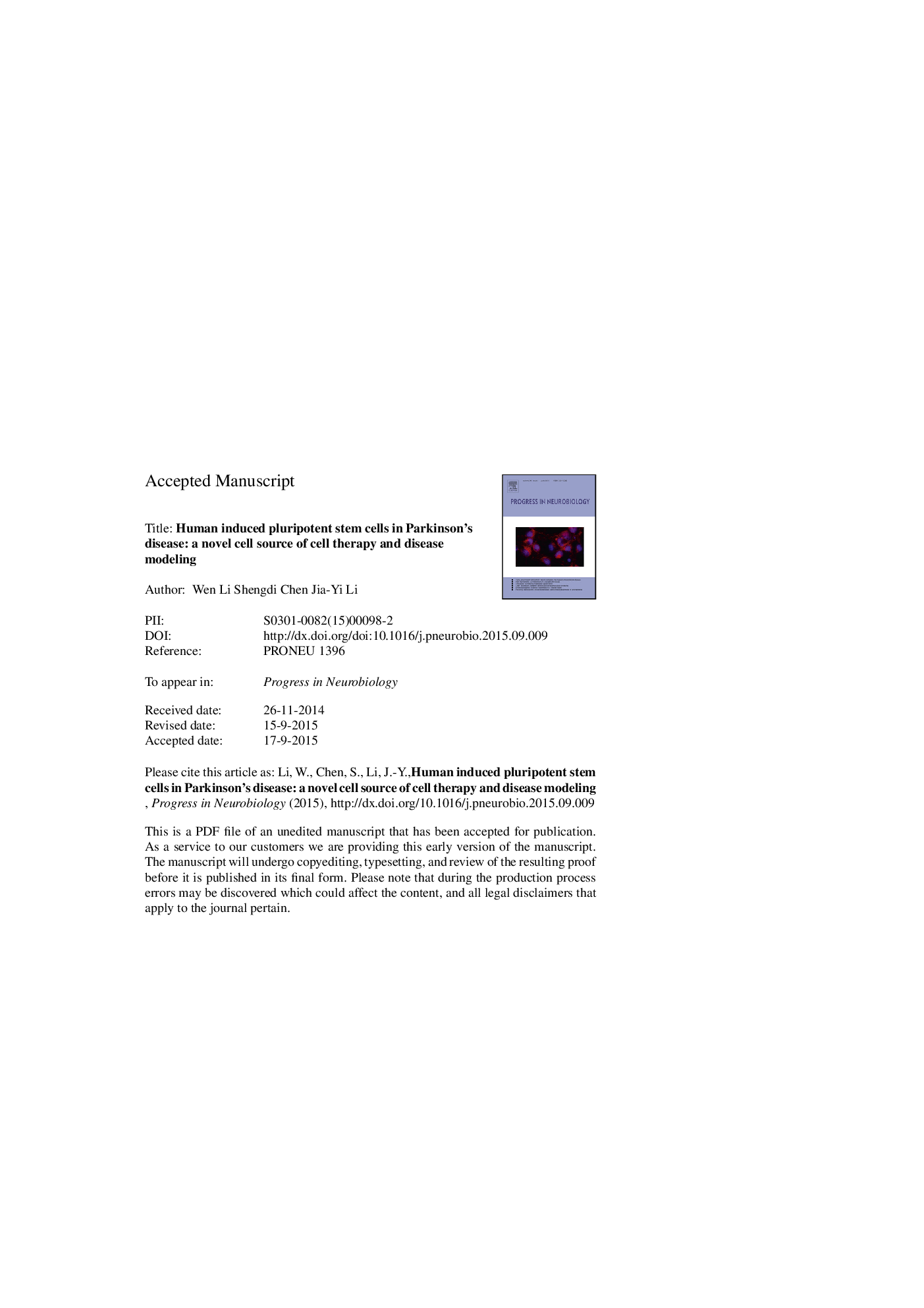| Article ID | Journal | Published Year | Pages | File Type |
|---|---|---|---|---|
| 6286469 | Progress in Neurobiology | 2015 | 49 Pages |
Abstract
Human induced pluripotent stem cells (hiPSCs) and human embryonic stem cells (hESCs) are two novel cell sources for studying neurodegenerative diseases. Dopaminergic neurons derived from hiPSCs/hESCs have been implicated to be very useful in Parkinson's disease (PD) research, including cell replacement therapy, disease modeling and drug screening. Recently, great efforts have been made to improve the application of hiPSCs/hESCs in PD research. Considerable advances have been made in recent years, including advanced reprogramming strategies without the use of viruses or using fewer transcriptional factors, optimized methods for generating highly homogeneous neural progenitors with a larger proportion of mature dopaminergic neurons and better survival and integration after transplantation. Here we outline the progress that has been made in these aspects in recent years, particularly during the last year, and also discuss existing issues that need to be addressed.
Keywords
TGFβOct4DnmtVPAWntEBNA1FGF8Sox2GDNFMPTPGSK-3βhiPSCsERKhESCsSAHATuj1KLF4SRY (sex determining region Y)-Box 2LIFTSA1-methyl-4-phenyl-1,2,3,6-tetrahydropyridineBDNFDNA methyltransferasehTERTSip1Ascorbic acidamyotrophic lateral sclerosisdocosahexaenoic acidSuberoylanilide hydroxamic acidReprogrammingAlzheimer's diseaseALSParkinson's diseaseTransforming Growth Factor BetaTrichostatin AHuman telomeraseDopaminergic differentiationembryoid bodyShhSMADHAHuman induced pluripotent stem cellshuman embryonic stem cellsInduced pluripotent stem cellssonic hedgehogfloor plateFibroblast growth factor 8brain derived neurotropic factorleukemia inhibitory factorKrüppel-like factor 4octamer-binding transcription factor 4Disease modelingBMPValproic acidBone morphogenetic proteinNeural transplantationextracellular signal-regulated kinaseGlycogen synthase kinase-3β
Related Topics
Life Sciences
Neuroscience
Neuroscience (General)
Authors
Wen Li, Shengdi Chen, Jia-Yi Li,
